Getting three rows of seats without getting something big – or pricey – isn’t easy.
Because there aren’t many.
In fact, there’s just one now – the 2021 VW Tiguan. The other two compact-sized crossovers previously available with three rows of seats – and without a big price – no longer are. Dodge dropped the Journey – and Mitsubishi isn’t currently selling the seven-passenger Outlander (the five-passenger Sport is still available).
The only other small crossover that seats seven is the Kia Sorento. But its starting price is much larger – $29,300 vs. $25,245 to start for the Tiggy.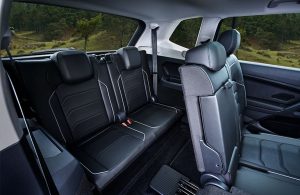
Which pretty much leaves this three-row VW in a class by itself.
At least for the moment . . .
What It Is
The Tiguan is one of just two compact-sized, three-row crossover SUVs remaining on the market now that Dodge has dropped the Journey and the regular Mitsubishi Outlander is off the market . . . momentarily.
It will be returning for 2022, though.
But in the meanwhile, the only other option – without going larger – is the much more pricey Kia Sorento.
Tiggy prices start at $25,245 for the base S trim Tiggy with front-wheel-drive; adding the optional 4Motion all-wheel-drive brings the MSRP up to $26,545.
A top-of-the-line SEL Premium R-Line with AWD and 20 inch wheels lists for $30,594.
Which is only a few hundred bucks more than Kia asks for the base-trim Sorento LX with front-wheel-drive and less than the base-trim Sorento LX when ordered with its optional AWD system ($31,190).
What’s New
Major upgrades for the new model year are an 8 inch, glass-surfaced LCD touchscreen and the addition of adaptive cruise control in SE and higher trims.
What’s Good
Seats seven in a five-seater size – for thousands less than the next-closest in size and seats.
Standard 2.0 liter turbocharged is torquey.
Audi-esque available tech and amenities, including optional 10-inch digital display dashboard.
What’s Not So Good
Third row requires buying SE trim and AWD; FWD versions seat five, not seven.
Standard 2.0 liter turbocharged engine is less powerful than it used to be.
Very modest (1,500 lbs.) maximum tow rating.
All trims come standard with the same 2.0 liter turbocharged four cylinder engine – paired with an eight-speed automatic transmission.
The engine makes 184 horsepower – slightly less than the Sorento’s slightly larger 2.5 liter four cylinder engine, which makes 191 hp without a turbo.
But because it is turbocharged, the Tiggy’s smaller engine makes a great deal more torque than the Kia’s engine: 221 ft.-lbs. at 1,600 RPM vs. 181 ft.-lbs. at 4,000 RPM.
So it’s not surprising that the VW is quicker by about 1 second to 60, getting there in just over eight vs. just over 9 for the Sorento.
You can speed things up in the Kia if you buy its optional engine – a higher-powered version of the 2.5 liter engine that makes 281 horsepower. The Tiggy doesn’t offer an engine upgrade, at least not in the United States.
In Europe, you can buy a Tiguan R that is powered by a 316 hp version of the 2.0 liter four that drops the 0-60 time almost in half, to 4.9 seconds.
Maybe next year.
And maybe the Kraken will come.
Despite its turbo, the Tiggy’s standard engine is a regular fuel engine – and its mileage 23 city, 29 highway for the FWD version and 21 city, 27 highway for the AWD version – is about the same as you’d get in the considerably pricier to buy Sorento: 24 city, 29 highway for the FWD version and 23 city, 25 highway for the AWD-equipped version.
The chief functional deficit that comes standard with both of these small crossovers is the lack of ability to pull much – even relative to cars.
The Tiggy’s maximum tow rating is just 1,500 lbs. The Kia’s 1,563 lb. maximum rating is only marginally higher.
Some cars can pull 3,500 lbs.
Sadly, the Tiggy used to come standard with a stronger (200 horsepower) version of the 2.0 liter engine; it got de-powered for the 2018 model year, losing 16 horsepower for the sake of gaining a few MPGs. Equipped with the old engine, the Tiggy’s mileage was: 21 city, 26 highway with FWD and 20 city, 26 highway with AWD.
Most people would probably rather have the 16 horsepower back – but the government wants the higher mileage, even if it’s only trivially so. And car companies – not just VW – must please the government even if it costs their customers. 
Even sadder, the Tiggy used to be available with a diesel engine capable of delivering 34 MPG in city driving and 46 on the highway. But “concern” over trivially higher (as in fractionally, angels-dancing-on-the-head-of-a-pin higher) emissions of oxides of nitrogen and the attendant grotesquely exaggerated/hysterical media coverage of VW’s “cheating” on federal emissions certification tests put the kibosh on an engine that delivered about 20 MPG higher mileage on the highway and 10 MPG higher mileage in city driving.
So much for “concern” about mileage.
PS: The diesel-powered Tiggy was available with a manual transmission, too.
And it could tow twice as much as the current gas-engined/automatic-only Tiggy.
The Tiggy was one of the first modestly priced small crossovers to come standard with a punchy turbocharged engine – when it came out as a new model back in ’07.
Which was a long time ago.
Fast forward to now and most crossovers come standard with a punchy turbocharged engine. Except – luckily enough for the Tiggy – its only remaining direct rival, the Kia Sorento.
Which doesn’t.
The Tiggy isn’t much more powerful than the Sorento – but it feels more powerful, because of its turbocharged engine, which makes its maximum power (its torque) sooner – at lower engine RPM – and so with less apparent effort. Leaving a parking lot to comfortably blend in with traffic going 45 doesn’t require flooring the VW’s gas pedal.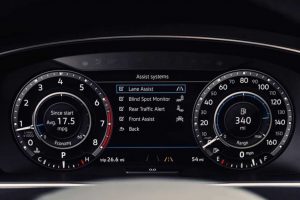
It does in the Kia – unless you order it with it optional turbocharged engine. But that will cost you about $10,000 more than it costs to get the VW’s standard turbocharged engine.
A manual would make it a lot more fun – and diesel would make it much more economical – but the government has seen to it that neither of those previously availables are available today.
This has rendered the Tiggy – which was once a standout in this class – nondescript.
Which is offset vs. its primary rival by the fact that the Sorento is also nondescript – and much more expensive. This is a good thing for VW because if the Sorento cost about the same, it’d be harder to choose between the two, the two being so much the same – excepting the Tiggy’s stronger-feel on the lower end and its more relaxed power delivery across the powerband.
But it’s sad to see the Tiggy reduced from what it was – which at one time was the most powerful (in 200 hp guise) and most economical (in TDI form) and most entertaining (with its formerly-available manual transmission) small crossover you could buy, irrespective of what it cost.
It’s not bad by any means now; it’s just not as good as it was.
But it’s still better than the Sorento – and that may be enough, for now.
At The Curb
The Tiggy is the smallest of the small/three-row bunch. Just 185.1 inches long – which is only about 8 inches longer than a small sedan like the Honda Civic, which does not seat seven. It is as easy to park as a small car like the Civic – but with the ability to carry another two people or carry five and 65.7 cubic feet of stuff in its cargo area.
But the Tiggy only seats seven if you buy the SE and up – and AWD, which all costs extra.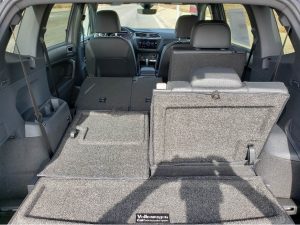
The Sorento – which is a little bigger – 189 inches end to end – doesn’t charge extra for the extra seats, which come standard in all trims.
But it does cost more, regardless.
It also does not offer the VW’s almost-Audi “digital cockpit” instrument panel with driver-configurable views and the almost-Audi vibe that comes standard in the Tiggy – because it’s made by the same company that makes Audis.
With a couple of exceptions.
One being that the base S trim Tiggy comes with just one USB port and a smaller-than-Sorento 6.5 inch LCD display for the apps and stereo. The Sorento comes standard with multiple USB ports and an 8 inch screen – which is available in the Tiggy but only in the SE and higher trims. In both of these small crossovers, you have to move up one trim from the base (S and LX, respectively) to get heated seats.
A small area of difference between the two is the Tiggy’s lower ride height (7.9 inches of clearance) vs. the Sorento (up to 8.2 inches) which comports with the VW’s more on-road sporty than off-road-ready demeanor. Kia also offers driver-adjustable Snow mode for the AWD system in the SX Prestige Line, with increased angles of approach and departure – making it more suitable for unpaved adventures.
Also, if you don’t need the third row, the second row version has 73.5 cubic feet of total cargo space; the second row also travels 7 inches fore and aft and if pushed back all the way, the backseaters enjoy more legroom than the driver and front seat passenger.
The Rest
One upside to the fallout over the diesel “cheating” fiasco is that VW has upped its standard comprehensive warranty coverage to five years/60,000 miles – up from three years/36,000 miles previously. But it’s a small consolation prize for the loss of the TDI option.
Some consolation – if you can wait about six months – will come when the ’22 Tiggy arrives. The dope is that the now-optional 10-inch digital cockpit and the larger 8-inch glass-surfaced secondary touchscreen that come standard in the current SE and higher trims will be made standard in all ’22 Tiggy trims – along with an exterior refresh.
It will be interesting to see whether VW decides to bring the slope-roofed version of the Tiggy – the Tiggy X, recently revealed in China – to North America.
It will also be interesting to see whether VW keeps the cost of the ’22 Tiggy in line with the cost of the ’21 – especially once we know what features the also-on-deck-for-an-update 2022 Sorento will get – and how much it will cost.
The third card in the deck is the next-generation Mitsubishi Outlander, also slated for a summer/fall ’22 introduction. Mitsu has long been the value proposition in the segment and it’s likely the new Outlander will continue that tradition.
That will bring the number of compact-sized/three-row crossovers back up to three – and make the competition hotter for the Tiggy.
The Bottom Line
This little VW has the seats – without the size. Or the cost.
And that might be just enough.
For now.
. . . .
Got a question about cars, Libertarian politics – or anything else? Click on the “ask Eric” link and send ’em in!
If you like what you’ve found here please consider supporting EPautos.
We depend on you to keep the wheels turning!
Our donate button is here.
If you prefer not to use PayPal, our mailing address is:
EPautos
721 Hummingbird Lane SE
Copper Hill, VA 24079
PS: Get an EPautos magnet or sticker or coaster in return for a $20 or more one-time donation or a $10 or more monthly recurring donation. (Please be sure to tell us you want a magnet or sticker or coaster – and also, provide an address, so we know where to mail the thing!)
My eBook about car buying (new and used) is also available for your favorite price – free! Click here. If that fails, email me at EPeters952@yahoo.com and I will send you a copy directly!


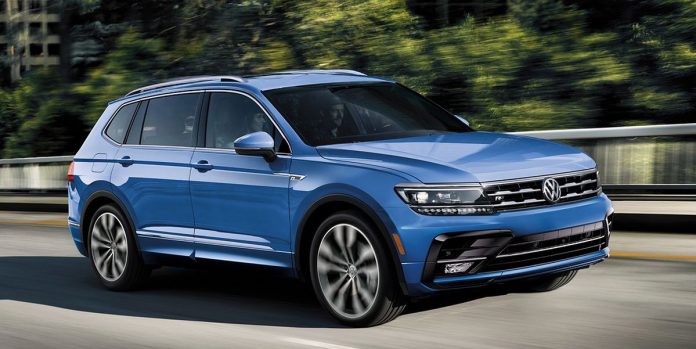

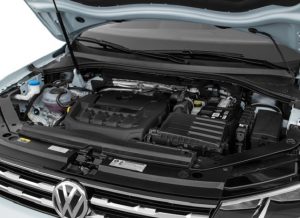









Top of the line SEL Premium R-Line 4Motion is $39,095. You may have confused it for the SE R-Line Black that is $30,595 (+1,300 for 4Motion AWD).
I work on VW’s every day for a living and had no idea that the gas mileage was so crappy. The 140hp 2 liter aircooled in my 1965 Bug gets better mileage than that!
Hi William,
It’s because of the weight. How much does a ’65 Bug weigh? About 1,700 lbs., right? A current Golf weighs about 3,000 lbs. My 1976 Trans-Am, which has a massive, cast-iron V8 engine and a bolt-on steel girder front subframe very much like what you’d find under a truck plus a solid axle rear end and heavy steel leaf springs, massive slabs of metal for the hood and quarter panels, etc.-only weighs about 700 pounds more.
Well, I can say two positive things about this CUV.
1. To me it is Very Good Looking.
2. No CVT.
Isn’t it interesting that a comparable Korean Kia now commands a higher price than this “German Car?”
I’ve been noticing that the gas mileage for your recent reviews is a little disconcerting. There seems to be this disconnected “push” by the manufacturers for better mileage, but they seem to be falling rather short, especially with all of the new “technology” at their disposal. Example: I currently drive a 2001 Chev Impala V6 and since returning to work last September (including winter idling), in a large city, my vehicle has averaged 21 MPG city and 33 MPG highway (including mountain driving). The horror is that these new vehicles with their tiny turbo’d 4’s can’t outperform a much larger naturally aspirated engine. They seem to be moving in the wrong direction. It’s sad.
I won’t get into what my previous ’91 VW Golf could do on the highway or in town – the new car buyers would cry.
Hi LJ,
Glad you noticed – and it’s true!
The new stuff purports to get slightly better mileage – and does, on the impossibly unrealistic federal test, at the cost of insanely over-complex technology (e.g., dual fuel injection, as it’s being styled), automatics with 2-3 overdrive gears, 48 volt/mild-hybrid/auto-stop/start systems, etc.
VW in the US screams “know your place.” Don’t let VW get to “uppity” in the US market, ‘lest it take away foot traffic from the Audi dealer. Since the margins are higher at Audi, they get the final word. Oh, they’ll let VW have the Golf-R, but that’s for kids anyway.
Hi RK,
I really, really want seat time in a Tiggy R… but I’d have to go to Europe to get it.